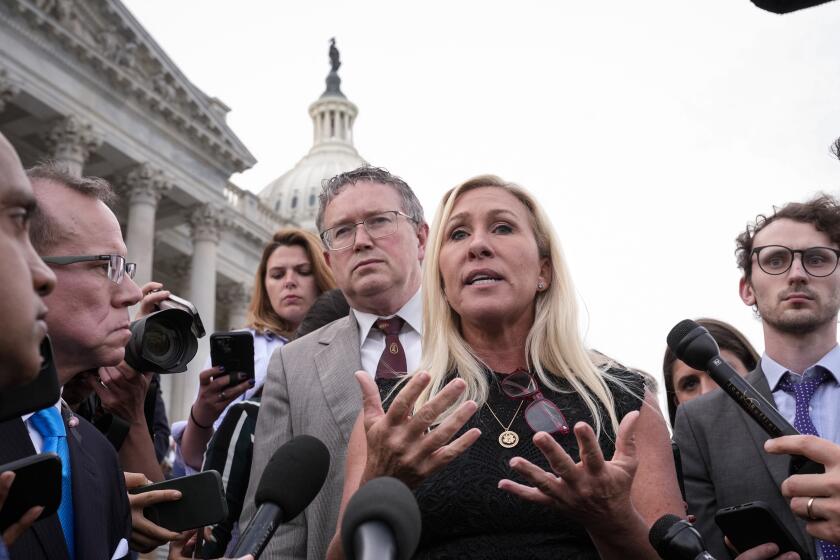Heavy Toll Feared From Cameroon Volcanic Gas : U.S., Other Nations Offer Assistance in Seepage ‘Catastrophe’
Toxic gas escaping from a lake in a volcanic crater in northwest Cameroon may have killed at least 300 people in what the government called a “geological catastrophe,” official sources said Sunday.
Travelers from the region arriving in the capital of Yaounde said as many as 1,000 people may have perished. The government’s initial statement, the only official report to mention casualties, said 40 people had been killed so far by gas seepage that began Friday at Lake Nios, near Wum.
A later government communique said President Paul Biya visited the region near the Nigerian border Sunday and declared it a disaster area. At least three villages were affected, according to the communique read over state television.
The United States, Britain, France and Israel have pledged assistance in the disaster, with some foreign experts and equipment expected to arrive in the West African state today.
Odor of Rotten Eggs
The government communique identified the toxic fumes as hydrogen sulfide, a flammable, poisonous gas. Hydrogen sulfide is colorless and has the odor of rotten eggs. It usually is formed by putrefaction, such as the decomposition of animal matter that is found in most volcanic gases and many natural gas and petroleum deposits.
Cameroon is an oil-producing country the size of California with a population of 9.2 million. It has natural gas reserves estimated at 3,500 billion cubic feet. Petroleum production is a recent addition to the tropical country’s economy.
The Cameroon government communique said that in response to a request for international aid to help cope with the disaster, the United States and Britain have agreed to supply logistical support for evacuation of villagers from the Menchum region. Israel is providing 15 doctors and nurses and France offered unspecified material help.
The Israeli medical team is to arrive this morning with Prime Minister Shimon Peres, who left Tel Aviv for Yaounde early today, his spokesman said in Jerusalem. Israel is expected to announce a resumption of diplomatic relations between the two countries during his four-day state visit.
In Washington, State Department spokeswoman Anita Stockman said: “We are prepared to provide assistance to the government of Cameroon based on what we’ve seen from press reports. The Cameroon government will be assessing the damage, and at that point we’ll know what the needs are.”
‘Many Victims’ Reported
The Cameroon television announcement did not cite figures on the number of victims, and a journalist who accompanied the president on the tour of the area said only that there were “many victims.”
Government sources, speaking on condition they not be identified, said 300 people are thought to have perished.
Biya visited Bamenda, 30 miles south of Wum, to oversee rescue operations, the government communique said, and returned to Yaounde on Sunday night.
It said relief teams of doctors and specialists from the ministries of defense and mines were rushed to the region. But a later report monitored in the Ivory Coast said the teams had not been able to reach the site because they lacked the proper equipment to deal with toxic gases.
On Aug. 16, 1984, toxic fumes from a lake in a volcanic crater in Djindoum killed 36 people, according to reports at the time. Djindoum is in the same mountain chain as Wum.
More to Read
Start your day right
Sign up for Essential California for news, features and recommendations from the L.A. Times and beyond in your inbox six days a week.
You may occasionally receive promotional content from the Los Angeles Times.




